Penn Vet Working Dog Center to graduate its first Diabetic Alert Dog, Bretagne
Listen-
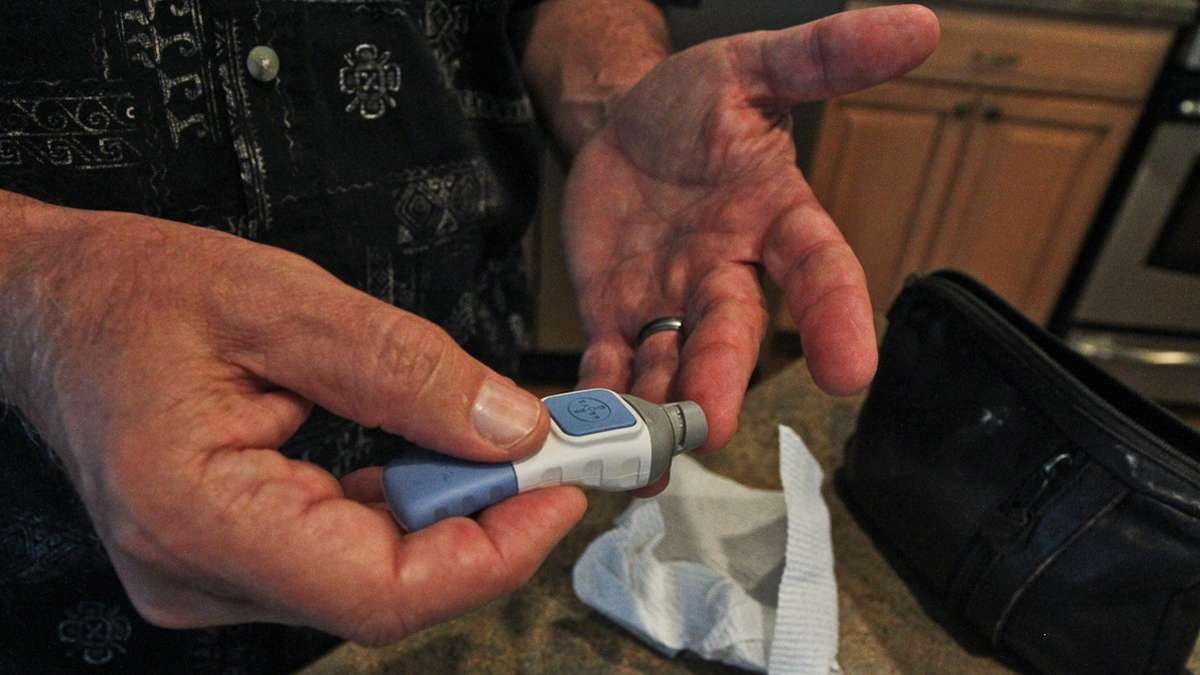
-
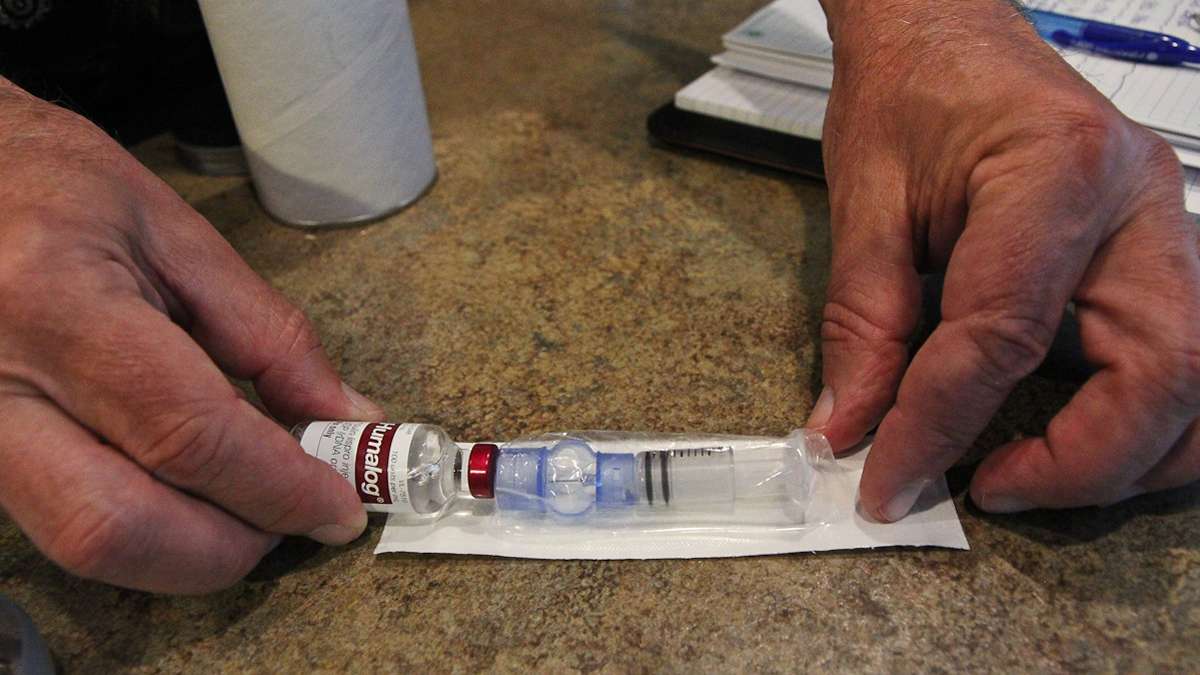
-
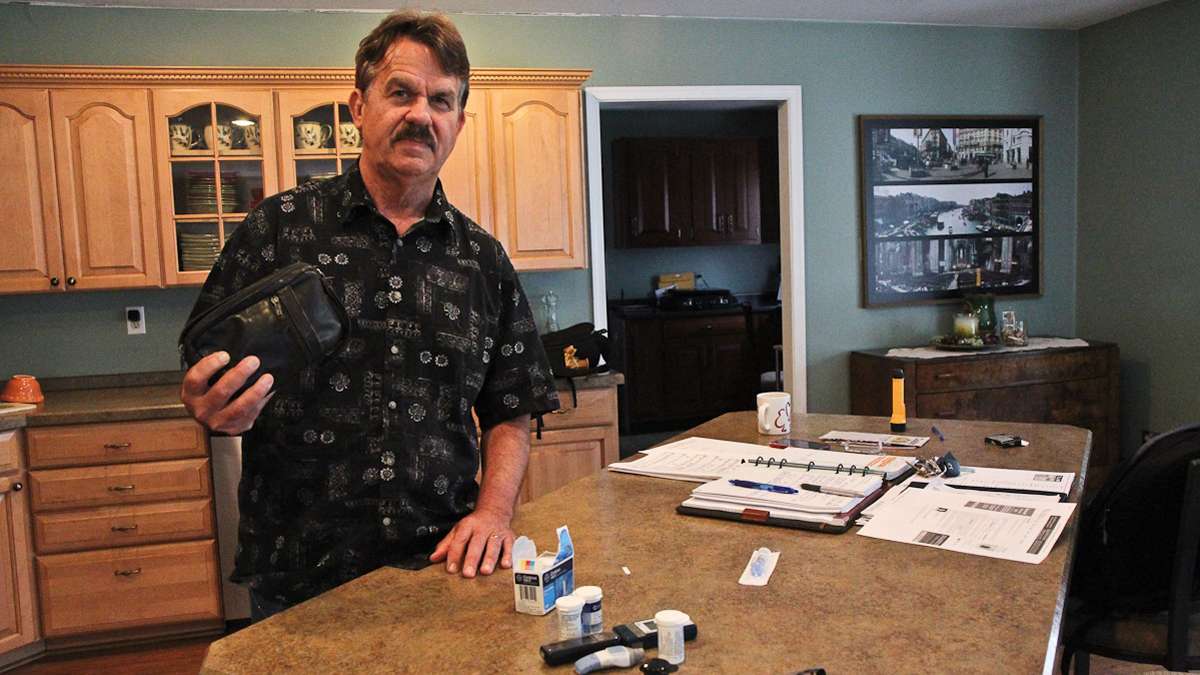
Randy Childress says management at his last job had a hard time understanding that he needed to take time during the work day to have snacks and inject insulin. (Kimberly Paynter/WHYY)
-

-
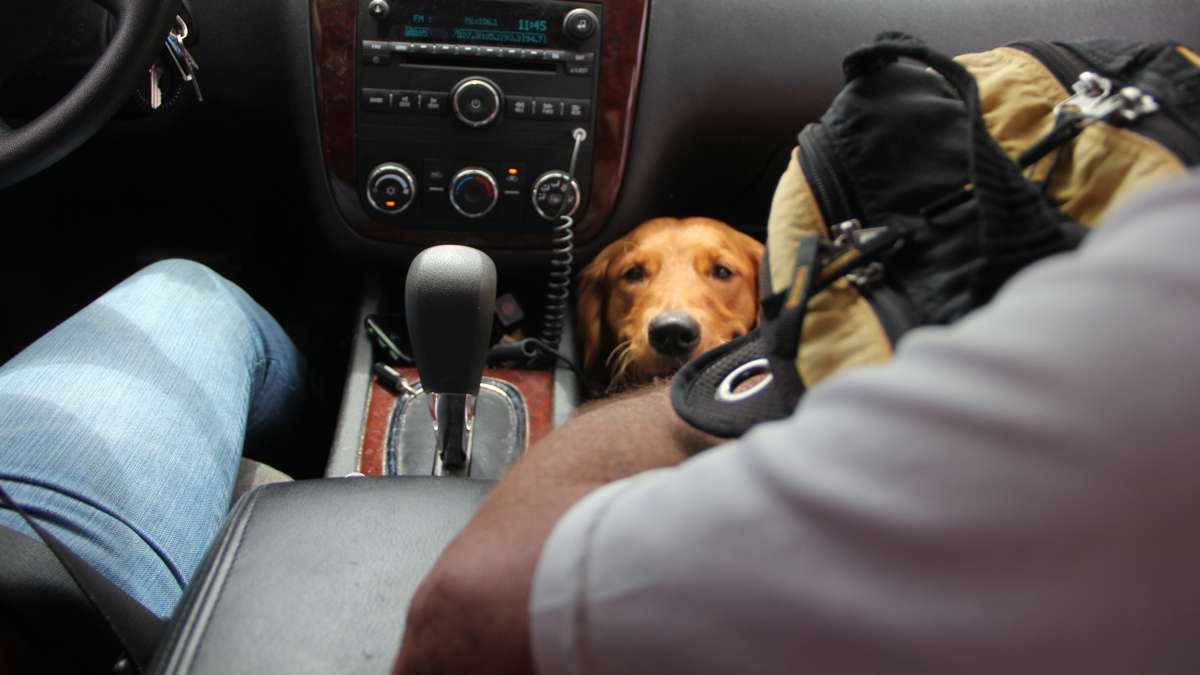
-

-

-
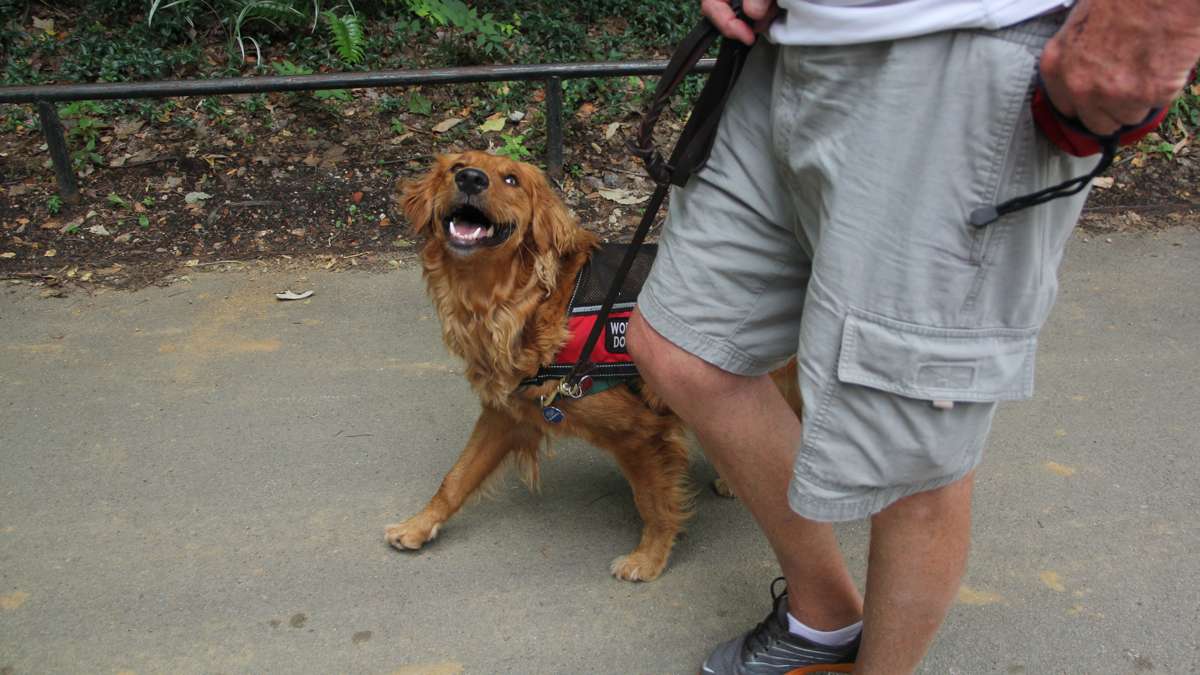
-
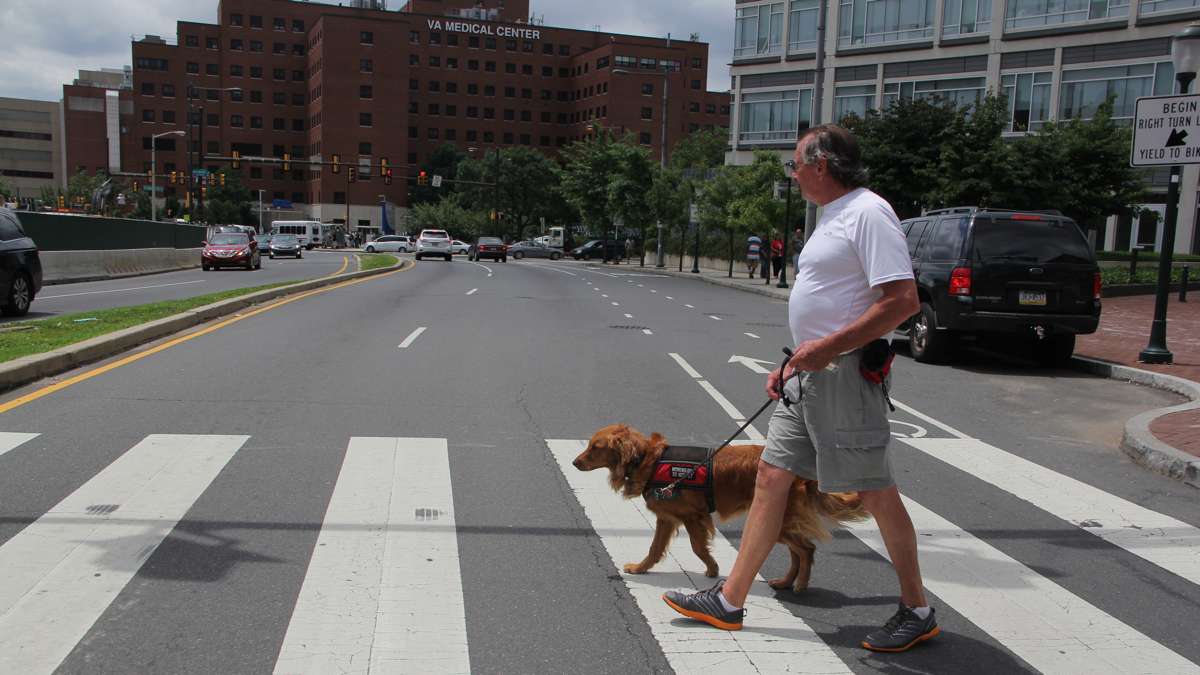
-

We shadow Bretagne on a training run through the city with her new owner, Wayne Mowry.
It’s a summer day in Philadelphia and I’m with Marisa Quinlan and Sarah Winter as they walk through Penn Campus’ Locust Walk with Wayne Mowry and his new diabetic alert dog, Bretagne.
Mowry has been a type one diabetic for 50 years, Quinlan and Winter are interns at the Penn Vet Working Dog Center and Bretagne will soon be the Center’s first Diabetic Alert Dog graduate. Today is one of their training sessions in the field, which means Bretagne will navigate tight quarters through sidewalk traffic, playing children, construction and many other distractions that she has been trained to ignore over the past two years.
Staying close to smell potential danger
The training team gives Bretagne a chance to sniff around outside and get focused before issuing the first command of “place.” Place means Bretagne should sit between Mowry’s legs – a safe place for her when they are in a crowd. It allows her to stay close where she can smell him in case his blood sugar drops below 70 milligrams per deciliter. An early signal from Bretagne can give Mowry time to eat something and get his blood sugar back to a safer level before it’s too late.
On the trail, Bretagne is given the command to “Check.” She sniffs all over Mowry’s lower body and then paws his leg, which is then met with lots of praise by the trainers.
“She won’t do that unless the [low blood sugar] scent is there,” said Winter. “Awesome job!”
Mowry notes that Bretagne’s work is important during the day, but even more so during the night when, without someone around, he would be unaware of his condition and perhaps become comatose. Bretagne may be in training, but Mowry is also a student on these walks. He’s learning how to communicate with Bretagne and meet her needs as well.
“This is important, too, to stop to go to the bathroom,” the trainers note. “It was a hard stretch of road and you want to give her a mental break to relax.” Bretagne enjoys some time rolling around in the grass. She pops up after a few moments almost as if to say, “I’m ready to go, guys!”
Identifying the specifics of detection
The Working Dog Center combines training with research – all with the goal to give working dogs the support they need to do their task, and lead happy, healthy lives.
Jonathan Ball is a Dog Handler at The Working Dog Center and is very involved in the Diabetic Alert program.
“On the research side of things, we are examining what it is these dogs are detecting because right now we don’t know,” Ball explains. “We know there is something associated with low blood sugar, so part of our research is to identify what that factor is.”
“There are three parts to the training,” he continues. “There is the scent training and that means training on the body recognizing that that odor is emitted from the body and then indicating when they find that odor. And then there is the public access piece and that’s training the dog to be a service dog, to be an appropriate member of society – so that means going into coffee shops or restaurants and being appropriate—lying under the table and not disrupting the course of business.
Ball also says it’s a buyer beware market because there are many service dogs out in the public arena and it’s more than just throwing a vest on a dog. He advises people looking to connect with a diabetic dog to make sure that there is some sort of certification involved, because right now, there is no requirement for certification.
“We are working with the Diabetes Alert Dog Alliance to help facilitate the expectation of DAD dogs nationally,” said Dr. Cindy Otto, Executive Director of the Penn Vet Working Dog Center. “It’s about the consumer, so we can have a high level standard of these dogs being sold and it’s also so people who are training these dogs have some benchmarks.”
Otto also noted that on the spectrum of working dogs, DAD dogs are more social and a little less energetic than the dogs that go into search and rescue or police work. Diabetes alert work offers the quieter dog to use detection skills in another arena.
Putting training to the test
Bretagne will officially graduate as a Diabetic Alert Dog sometime this summer and will live with Mowry in his home in Northern New Jersey. They will become a team for life taking care of each other and acclimating to each other’s lifestyles.
“I’ve been riding motorcycles for probably 30 or 40 years of my life on and off,” said Mowry. “So I might have to get a sidecar and also a bicycle, I don’t know how to get her alongside a bicycle because she’s gonna get too pooped!”
For now, after her training session, Jonathan Ball and Bretagne’s four-legged friends greet her back at the Working Dog Center. She heads into her crate for a nap and a little treat for a job well done.
WHYY is your source for fact-based, in-depth journalism and information. As a nonprofit organization, we rely on financial support from readers like you. Please give today.



